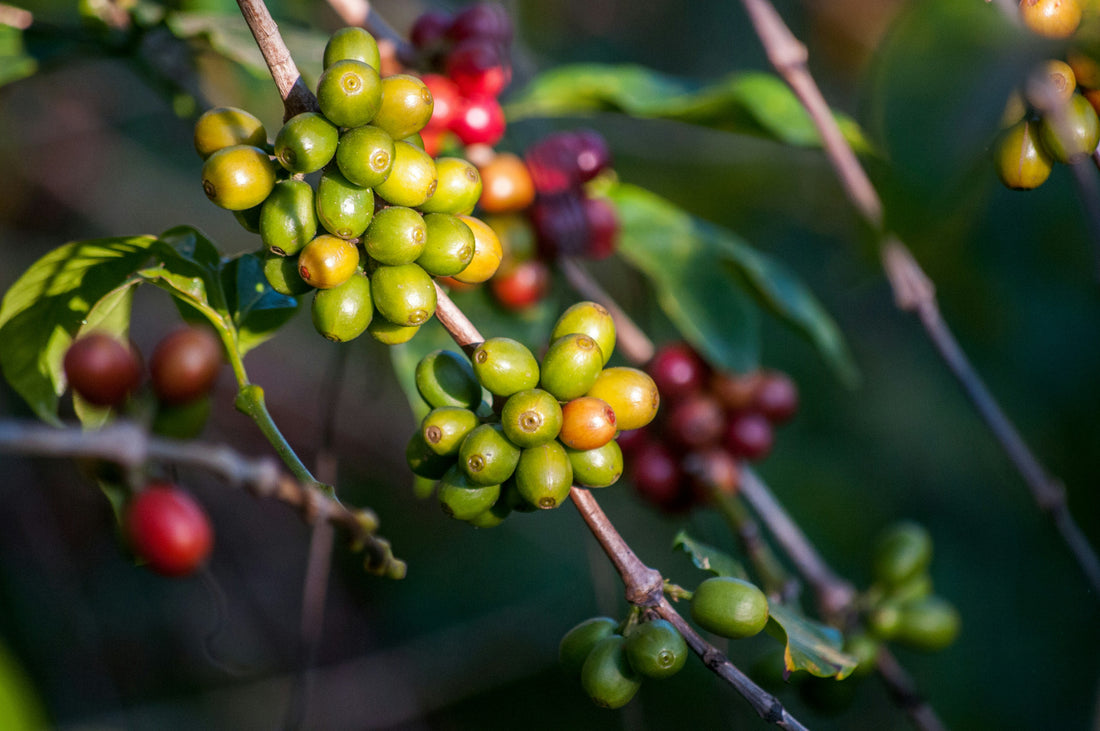
The Fascinating World of Arabica Coffee Varieties
Share
Arabica coffee, appreciated for its quality and aromatic richness, is the most cultivated and consumed variety of coffee in the world. However, the term "Arabica" encompasses an incredible diversity of varieties, each bringing its own unique characteristics to the cup. Diving into the world of varieties such as Typica, Bourbon, Caturra, Pacamara, Geisha, SL28, SL34, Catuaí, Castillo, and many others, we discover a range of flavors that fascinates lovers around the world.
1. Typica: Classic Originality
History and Origin
The Typica variety is one of the oldest and traditional varieties of Arabica coffee. It originated in the Ethiopian highlands, the birthplace of coffee, before spreading globally through Yemen and Indonesia to the Americas.
Features
Typica coffees are known for their balanced flavor profile. They often have sweet and slightly tart notes, with a velvety texture. Flavors may include nuances of chocolate, hazelnut and subtle fruit.
Terroirs and Cultivation
Typica is grown in several regions around the world, each bringing its own unique touch. For example, Typica from Colombia can offer notes of caramel and red fruits, while those from Jamaica, like the famous Blue Mountain, are known for their sweetness and complexity.
2. Bourbon: Elegance and Softness
History and Origin
Originally from Bourbon Island (today Réunion), the Bourbon variety is a direct descendant of Typica. It has spread to many regions, particularly Latin America.
Features
Bourbon coffees are often characterized by their exceptional sweetness, lively acidity and fruity notes. They offer a refined tasting experience, with aromas of caramel, red fruits and sometimes flowers.
Terroirs and Cultivation
Grown in regions like Brazil, Rwanda and Guatemala, Bourbon coffees reflect the unique characteristics of their terroir. In Rwanda, for example, Bourbons are known for their medium to full body and citrus and berry notes.
3. Caturra: Compact, but Full of Flavor
History and Origin
Caturra is a natural mutation of the Bourbon variety, discovered in Brazil. It stands out for its small, compact size, which makes it ideal for closely spaced plantings.
Features
Caturra coffees offer a bright, fruity and well-balanced flavor profile. Typical notes include citrus, red fruits and slight acidity. Its small size does not affect the quality of the beans, which remain rich in aromas.
Terroirs and Cultivation
Grown primarily in Central and South America, Caturras thrive in a variety of conditions. In Nicaragua, for example, they are known for their chocolate and fruit notes, while in Colombia they often feature bright acidity and tropical fruit flavors.
Explore Caturra Coffee on Jockos Coffee
4. Pacamara: The Big and Complex
History and Origin
The Pacamara variety is a hybrid between the varieties Pacas (a mutation of Bourbon) and Maragogipe (a mutation of Typica). Developed in El Salvador, it is known for its large bean sizes and complex flavor profiles.
Features
Pacamara coffees are known for their intense aromas and complexity in the cup. They often feature notes of tropical fruit, berries, chocolate and a crisp but balanced acidity. The large grain size contributes to the richness and depth of flavors.
Terroirs and Cultivation
Pacamara is grown mainly in Central America, particularly in El Salvador and Nicaragua. High altitude conditions and careful growing techniques are key to bringing out the best in this strain.
5. Geisha: Rare and Exceptional
History and Origin
The Geisha variety, also spelled Gesha, is native to the mountainous forests of Ethiopia. It was introduced to Panama in the 1960s, where it gained worldwide fame for its exceptional qualities.
Features
Geisha coffees are often described as exquisite and complex. They feature pronounced floral notes, lively acidity and nuances of tropical fruits like mango, papaya and jasmine. Their rarity and unique flavor profile make them one of the most sought-after and expensive varieties in the world.
Terroirs and Cultivation
Mainly grown in Panama, Geisha has also found suitable habitats in other regions such as Costa Rica and Colombia. The high altitude conditions and attentive care of the producers contribute to the exceptional quality of these coffees.
6. SL28 and SL34: Kenyan Elegance
History and Origin
The SL28 and SL34 varieties were developed in Kenya in the 1930s by Scott Agricultural Laboratories. They are designed to resist disease and adapt to local conditions while providing superior cup quality.
Features
These varieties are famous for their vibrant aromas and crisp acidity. Tasting notes often include berries, citrus, and complex fruit, with a refreshing finish and juicy acidity.
Terroirs and Cultivation
Grown mainly in the mountainous regions of Kenya, SL28 and SL34 benefit from rich volcanic soils and ideal climatic conditions. Kenyan coffees of these varieties are among the most distinctive and beloved in the world.
7. Catuaí: The Brazilian Strength
History and Origin
Catuaí is a cross between Mundo Novo and Caturra, developed in Brazil in the 1940s. It is valued for its disease resistance and high yield.
Features
Catuaí coffees are known for their smoothness and medium to full body. They often offer notes of fruit and caramel, with a pleasant and balanced acidity.
Terroirs and Cultivation
Catuaí is widely grown in Brazil and other parts of Latin America. Optimal growing conditions include mid to high altitudes and subtropical climates.
Explore Catuaí Coffee on Jockos Coffee
8. Castillo: Colombian Resistance
History and Origin
The Castillo variety was developed in Colombia by the National Coffee Research Center (Cenicafé) to resist coffee rust while offering good cup quality.
Features
Castillo coffees often feature balanced flavor profiles with notes of chocolate, caramel and fruit. They have lively acidity and medium body.
Terroirs and Cultivation
Castillo is primarily grown in Colombia, where it thrives in the high altitudes and varied climatic conditions. This variety contributes to the sustainability of coffee production in Colombia due to its disease resistance.
Explore Castillo Coffee on Jockos Coffee
Conclusion
As you explore the different varieties of Arabica coffee, you realize that each type offers a unique and distinctive taste experience. Whether you're drawn to the elegant sweetness of Bourbon, the complex liveliness of Geisha, the richness of Pacamara, or the classic simplicity of Typica, each variety brings its own magic to the cup. As a coffee lover, the adventure is in discovering these nuances, exploring the terroirs and tasting the endless richness that the world of Arabica coffee varieties has to offer.
The next time you enjoy a cup of coffee, take a moment to appreciate the effort and story behind each bean. Each variety is an invitation to a sensory journey through the cultures and traditions of the coffee world.
Photo by Rodrigo Flores on Unsplash
